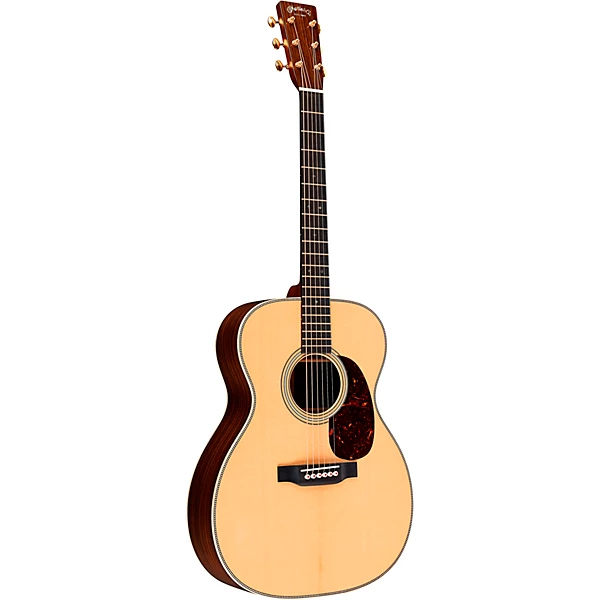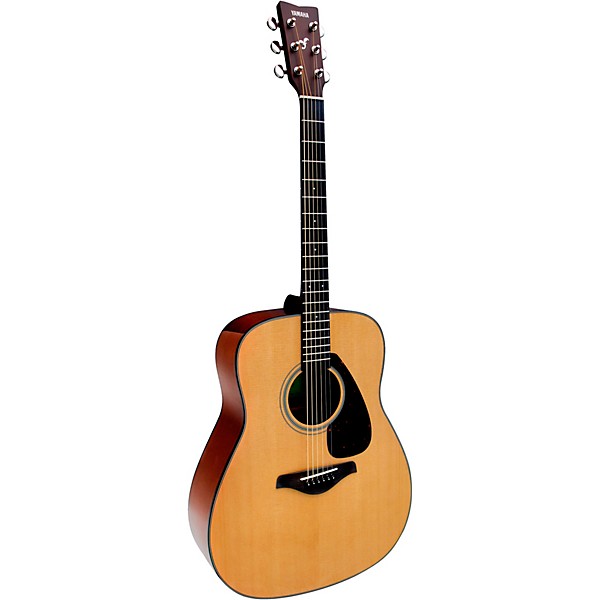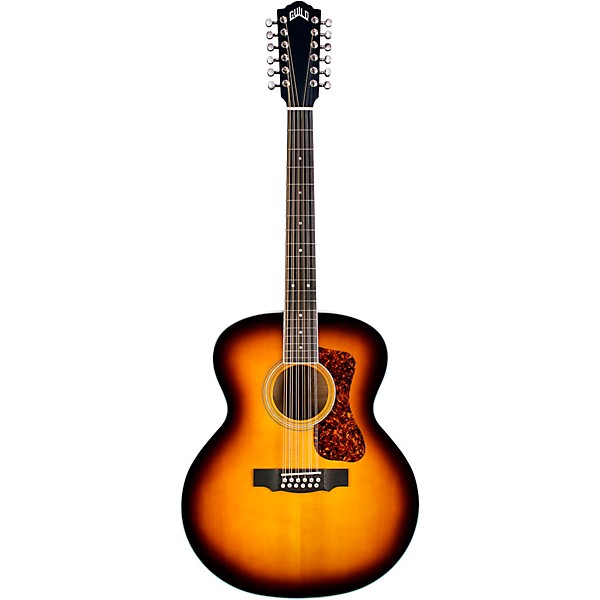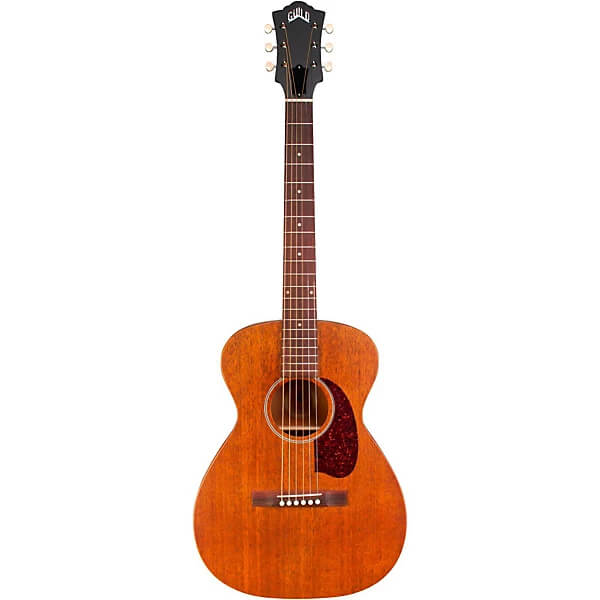When you buy through our links, we may earn an affiliate commission.
Are you tired of struggling to find the perfect acoustic guitar for your fingerstyle playing? As a fingerstyle player, you need an instrument that can deliver rich and full-bodied tones while also being comfortable and easy to play.
Fortunately, there are plenty of acoustic guitars on the market that are designed specifically for fingerstyle players, and we're here to help you find the best one for you.
In this buyer's guide, we'll explore the top guitars for fingerstyle and provide you with everything you need to know to make an informed purchase.
Our top pick, the Martin 000-28, is a classic choice for fingerstyle acoustic guitar.
Whether you're a beginner or a seasoned pro, we promise to help you find the perfect guitar to elevate your fingerstyle playing to the next level. So sit back, relax, and let's dive into the world of fingerstyle guitars.
Quick Summary of the Best Guitars for Fingerstyle
- Martin 000-28 Modern Deluxe Acoustic Guitar (Best Overall)
- Taylor 214ce Deluxe Acoustic-electric Guitar (Best Cutaway)
- Yamaha FG800 Dreadnought (Best Budget Pick)
- Cordoba C5 Nylon String Acoustic Guitar (Best Nylon String)
- Guild F-2512E Deluxe 12-string Acoustic-electric Guitar (Best 12 String)
- Guild M-20 Concert Acoustic Guitar (Best Parlor Fingerstyle Guitar)
Best Guitars for Fingerstyle
1. Best Overall – Martin 000-28 Modern Deluxe Acoustic Guitar

SPECS
- Top Wood: Spruce Vintage Tone System (VTS) top
- Back and Sides: East Indian Rosewood
- Neck: Mahogany with Ebony fretboard
The 000-28 Modern Deluxe offers a fresh interpretation of the iconic Martin Vintage, showcasing exceptional craftsmanship and features.
Its spruce Vintage Tone System (VTS) top, combined with East Indian rosewood back and sides featuring flamed maple binding, produces a tone and projection that has enchanted countless musicians.
This acoustic guitar boasts high-end appointments, including a dovetail neck joint and natural protein glue construction, enhancing and supporting the instrument's aged tone.
An ultra-modern 2-way steel truss rod ensures effortless neck adjustments and is impressively 64% lighter than traditional truss rods.
This premium Martin acoustic guitar, like the Modern Deluxe series, undergoes the Plek Pro process, a state-of-the-art computer-guided method that meticulously scans, levels, and dresses the frets to achieve impeccable consistency and smooth playability.
With Plek'd frets, the 000-28 ensures that every note, in any position, resonates with exceptional clarity and pristine tone. The quality of an acoustic guitar lies in its wood, and the Martin 000-28 delivers a classic tonewood pairing without compromise.
2. Best Cutaway – Taylor 214ce Deluxe Acoustic-electric Guitar

SPECS
- Top Wood: Solid Sitka Spruce
- Back and Sides: Layered Rosewood
- Neck: Sapele with Ebony fretboard
Whether you're performing on stage or in the studio, the 214ce Deluxe equips you with everything you need.
Taylor's renowned Grand Auditorium body style, showcased in the 214ce Deluxe, combined the best elements of a dreadnought with a narrower waist, resulting in a sleek look and enhanced treble response.
This body style also enhances note definition, making it suitable for various playing styles, from fingerpicking to medium strumming.
This instrument features a Grand Auditorium body, offering the width and depth of a dreadnought but with a tapered waist and elegant contours that create a visually appealing and balanced appearance. Loved by recording engineers, the 214ce Deluxe delivers a big sound with an impressive presence.
Its slim and speedy neck ensures effortless playability, embodying the signature Taylor experience. For rich tone and clear projection, Taylor incorporates a solid Sitka spruce top and layered rosewood back and sides into the 214ce Deluxe.
The spruce top adds an open and balanced quality to the overall sound, making it a versatile fingerstyle acoustic guitar.
3. Best Budget Pick – Yamaha FG800 Dreadnought

SPECS
- Top Wood: Spruce
- Back and Sides: Nato/Okoume
- Neck: Nato with Walnut fretboard
Retaining the beloved dreadnought body style and solid spruce top from the FG700, the FG800 introduces scalloped bracing for enhanced low-end and improved projection in live and recording scenarios.
Crafted from nato wood and Okoume, the body, back, and sides of the FG800 provide a warm, full-bodied tone along with an appealing aesthetic.
Its satin-finished slim neck, featuring rounded fret edges, ensures comfortable playability. Furthermore, when used with Yamaha's Player Port app on iOS and Android, the FG800 becomes an excellent learning tool, offering access to tips, FAQs, and a built-in automatic tuner.
It's no surprise that Yamaha's FG series has gained global popularity. The comfortable dreadnought bodies, high-quality tonewoods, and fast-playing necks make these guitars ideal for beginners.
They are also reliable options for experienced musicians seeking an additional instrument for performances or casual playing at home.
4. Best Nylon String – Cordoba C5 Nylon String Acoustic Guitar

SPECS
- Top Wood: Solid Cedar
- Back and Sides: Mahogany
- Neck: Mahogany with Rosewood fretboard
The Cordoba C5 is an excellent choice for those seeking a nylon-string acoustic fingerstyle guitar that offers great value.
Handmade with a cedar top and mahogany back and sides, the C5 delivers a rich and vibrant tone. Its solid mahogany neck ensures excellent sustain and intricate detail.
With its glossy polyurethane finish, Indian rosewood binding, and stylish rosette, the C5 boasts an appealing appearance that matches its playability.
Construction-wise, the Cordoba C5 adheres to traditional handmade classical guitar design, featuring a solid cedar top and Spanish-style fan bracing. This bracing allows for optimal vibration and balanced tone.
The combination of mahogany back and sides with a solid cedar top produces a harmonious blend of deep richness and brilliance.
The neck, also made of solid mahogany, ensures efficient transfer of string energy to the cedar top. Completing its elegant look, the C5 features a rosewood fingerboard and bridge.
5. Best 12 String – Guild F-2512E Deluxe 12-string Acoustic-electric Guitar

SPECS
- Top Wood: Solid Sitka Spruce
- Back and Sides: Flamed Maple
- Neck: Mahogany with Pau Ferro fretboard
The Guild F-2512E Deluxe acoustic-electric guitar offers an impressive combination of tone and aesthetics. This 12-string instrument features an arched back, a jumbo body, and a stylish '60s-inspired design, all at an irresistible price point.
Crafted with premium tonewoods, including an arched flame maple back and matching sides, along with a solid Sitka spruce top, this guitar produces a rich and folky sound with a distinct attack.
It is equipped with an AP-1 pickup and Fishman electronics, ensuring a clean and impressive amplified tone, and the comfortable C-shaped mahogany neck and pau ferro fingerboard provide a familiar playing experience.
With its exceptional sustain and projection, the Guild F-2512E Deluxe is a valuable addition to any guitarist's collection.
6. Best Parlor Fingerstyle Guitar – Guild M-20 Concert Acoustic Guitar

SPECS
- Top Wood: Mahogany
- Back and Sides: Mahogany
- Neck: Mahogany with Rosewood fretboard
The Guild M-20 acoustic guitar signifies Guild's return to US-made instruments and pays homage to the original model produced in 1967 at the Westerly, Rhode Island factory.
This stripped-down acoustic guitar offers a comfortable concert body style and a midrange-focused tone that excels in both strumming and fingerstyle guitar playing.
With vintage-style aesthetics, feel, and tone, the Guild M-20 captures the essence of Guild's history and the reintroduction of US-manufactured guitars.
Constructed entirely from solid mahogany, the neck, top, back, and sides deliver a balanced and warm tone with clear clarity, complemented by the rosewood fretboard and bridge that enhance harmonic overtones.
The M-20's appearance exudes warmth, while its minimal aesthetic appointments contribute to its vintage appeal. The concert-style body and compact dimensions ensure comfortable performance for musicians who require extended playtime.
Best Guitars for Fingerstyle Buyer's Guide
When shopping for the best fingerstyle guitars, there are several important factors to consider:
- Tonewoods
- Body Style
- Neck Profile and Width
- Action and Setup
Tonewoods
When shopping for the best fingerstyle guitars, one crucial aspect to consider is the choice of tonewoods. Tonewoods play a significant role in shaping the overall sound, resonance, and character of an acoustic guitar.
Different tonewoods possess distinct tonal qualities, and understanding their characteristics can help you make an informed decision.
Spruce
Spruce is one of the most commonly used tonewoods for guitar tops. It offers a balanced and versatile sound with excellent projection and clarity. Sitka spruce is a popular choice for its strong fundamental tones, making it suitable for a wide range of playing styles.
Engelmann spruce, on the other hand, tends to produce a more responsive and nuanced sound, ideal for fingerstyle playing where subtlety and dynamics are emphasized.
Cedar
Cedar is another favored tonewood, known for its warm and rich tonal characteristics. It produces a lush, complex, and harmonically rich sound with a quick response.
Cedar is particularly suitable for fingerstyle players seeking a more intimate and expressive sound, as it enhances the tonal complexity of individual notes.
Mahogony
Mahogany is often used for the back and sides of guitars, offering a focused and balanced tonal response. It produces a pronounced midrange and a woody, warm sound with a quick attack.
Mahogany guitars are known for their clarity and note definition, making them an excellent choice for fingerstyle players who value articulation and separation between notes.
Rosewood
Rosewood is highly regarded for its rich, complex, and resonant sound. Brazilian rosewood, in particular, is revered for its exceptional tonal properties. Still, due to its rarity and environmental concerns, other types of rosewood, such as Indian rosewood, have become more commonly used.
Rosewood imparts a lush, deep bass response, shimmering trebles, and a balanced overall tone. Fingerstyle players often appreciate the tonal complexity and sustain that rosewood guitars offer.
Maple
Maple is known for its bright, focused, and articulate sound. It produces a tight, snappy response with excellent note definition.
Maple guitars are prized for their clarity and separation, making them suitable for intricate fingerstyle playing, where every note needs to be distinct. However, maple guitars may lack some warmth and low-end depth compared to other tonewoods.
Each tonewood has its own set of pros and cons, and personal preference plays a significant role in selecting the right tonewood for fingerstyle playing.
It's crucial to try out different guitars with various tonewoods to determine which sound and feel resonate with your playing style and musical preferences.
Ultimately, the best fingerstyle guitar will be one that inspires you and allows you to express your musicality with ease and satisfaction.
Body Style
Another important factor to consider when shopping for a fingerstyle guitar is the body style. The body style not only affects the guitar's comfort and playability but also significantly influences its tone and projection.
Understanding the different body styles commonly used in fingerstyle guitars can help you make an informed decision.
Grand Auditorium (GA) or Orchestra Body Style
The most common body style for fingerstyle guitars is the Grand Auditorium (GA) or Orchestra model. It strikes a balance between a larger dreadnought and a smaller concert-sized guitar, offering versatility for various playing styles.
The GA body shape typically features a narrower waist, which enhances playability and comfort during fingerstyle techniques. It delivers a well-rounded, balanced tone with an emphasis on the midrange, making it suitable for both fingerpicking and strumming.
The GA body style is known for its clarity, note definition, and responsiveness to a wide dynamic range.
The Concert or OOO (Triple-O) Body Style
The Concert or OOO (Triple-O) body style is slightly smaller than the Grand Auditorium, providing a focused and intimate sound. The smaller body size enhances the guitar's responsiveness and articulation, making it a favorite among fingerstyle players seeking clarity and precision.
The Concert body shape typically produces a balanced tonal response with emphasis on the midrange and treble frequencies. It is well-suited for intricate fingerstyle playing, particularly in solo or small ensemble settings, where precise note articulation is essential.
Dreadnought Body Style
The Dreadnought body style is larger and offers a bold, robust sound with a strong bass response. While dreadnought guitars are often associated with strumming and flatpicking, they can also be suitable for fingerstyle playing, particularly if you prefer a more powerful and resonant sound.
Dreadnought guitars produce a rich and full-bodied tone with strong projection, making them ideal for players who desire a dynamic and commanding presence.
Parlor Body Style
The Parlor body style is a smaller option that evokes a vintage aesthetic and delivers a distinct sound. Parlor guitars are compact and comfortable to play, making them suitable for fingerstyle players who prefer a more intimate and focused tone.
While they may not have the same volume and bass response as larger body styles, parlor guitars excel in producing a balanced and articulate sound, particularly in the midrange and treble frequencies. They are ideal for fingerstyle players who value clarity and sweetness in their tone.
Neck Profile and Width
When searching for the best fingerstyle guitars, the neck profile and width play a significant role in the instrument's playability and comfort. The neck profile refers to the shape of the back of the neck, while the neck width determines the spacing between the strings.
Understanding the different neck profiles commonly used can help you find a guitar that suits your playing style and preferences.
C-shaped Neck Profile
One common neck profile is the C-shaped profile. This profile is rounded and provides a comfortable grip for many players, making it a popular choice.
The C-shaped neck profile offers a balance between thickness and depth, allowing for a secure hold while still accommodating various playing techniques. It provides a versatile feel that is suitable for a wide range of musical genres and playing styles.
V-shaped Neck Profile
Another common neck profile is the V-shaped profile. This profile has a more pronounced ridge in the center of the back of the neck, resembling the shape of a "V."
The V-shaped profile offers a vintage-inspired feel and is often preferred by players who enjoy thumb-over-fretboard techniques and who appreciate a more substantial grip.
The V-shaped profile can provide enhanced stability and control for fingerstyle playing, especially when executing complex chord voicings and intricate picking patterns.
Slim Neck Profile
A modern alternative is a slim or shallow profile. This profile offers a thinner and flatter shape, providing a faster and more effortless playing experience.
The slim profile is often favored by players who have smaller hands or who prefer a sleek and fast neck. It allows for quick movement across the fretboard, facilitating intricate fingerstyle techniques and fast-paced playing.
When it comes to neck width, fingerstyle players often find wider necks more accommodating. A wider neck allows for greater string spacing, which can make fingerpicking and intricate chord fingerings more comfortable.
It provides room for precise finger placement and reduces the likelihood of accidentally muting adjacent strings. However, it's essential to find a neck width that feels comfortable for your hand size and playing technique.
Some players may prefer a narrower neck for its ease of navigation and faster playing speed.
It's important to note that the choice of neck profile and width is a matter of personal preference. What feels comfortable and facilitates your playing style may vary from player to player.
It's recommended to try out different guitars with various neck profiles and widths to find the one that feels the most natural and allows you to execute your fingerstyle techniques with ease.
Frequently Asked Questions (FAQs)
Do I need a specific guitar for fingerstyle playing?
While any guitar can be used for fingerstyle playing, some guitars are better suited for this style than others. Fingerstyle playing typically involves intricate fingerpicking patterns, so a guitar with a wider fretboard and a flatter neck profile can be more comfortable and easier to play.
Can electric guitars be used to play fingerstyle guitar?
Yes, electric guitars can definitely be used to play fingerstyle guitar. While fingerstyle is often associated with acoustic guitars, electrics offer their own unique advantages for this style.
Electric instruments also provide the option to use various effects and amplification, allowing for a wider range of sounds and tonal possibilities. This can be particularly beneficial for players who want to explore different styles or add additional textures to their fingerstyle playing.
What is the optimal string gauge for fingerstyle playing?
The optimal string gauge for fingerstyle playing can vary depending on individual preference and playing style. There is no one-size-fits-all answer, as different players may prefer different string gauges based on their desired tone, playing technique, and the guitar they are using.
That being said, lighter gauge strings are commonly favored by many fingerstyle players. Lighter gauge strings are generally easier to fret and bend, which can be advantageous for intricate fingerpicking patterns and fast finger movements. They can also produce a brighter and more articulate tone.
Conclusion
The world of fingerstyle guitar playing offers a vast array of options, each with its own unique qualities and characteristics.
We have explored some of the best fingerstyle acoustic guitars available today, highlighting their exceptional tonal capabilities, playability, and craftsmanship.
Our top pick, the 000-28 Modern Deluxe, stands out as the top choice for fingerstyle guitarists, but ultimately, the best fingerstyle guitar is a subjective choice that depends on individual preferences and playing styles.
For beginners and those on a budget, the Yamaha FG800 Dreadnought is also an excellent alternative.
It is essential to try out various guitars, considering factors such as tonal characteristics, comfort, and personal connection, to find the perfect match.
Whether you are a beginner or an experienced fingerstyle player, selecting the right guitar is a significant step in your musical journey.

I have never had the opportunity, or taken it when presented, but I absolutely long to try that Martin.
I mean how has the most iconic finger picking guitar of all time escaped me until this moment?